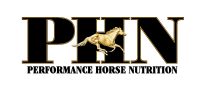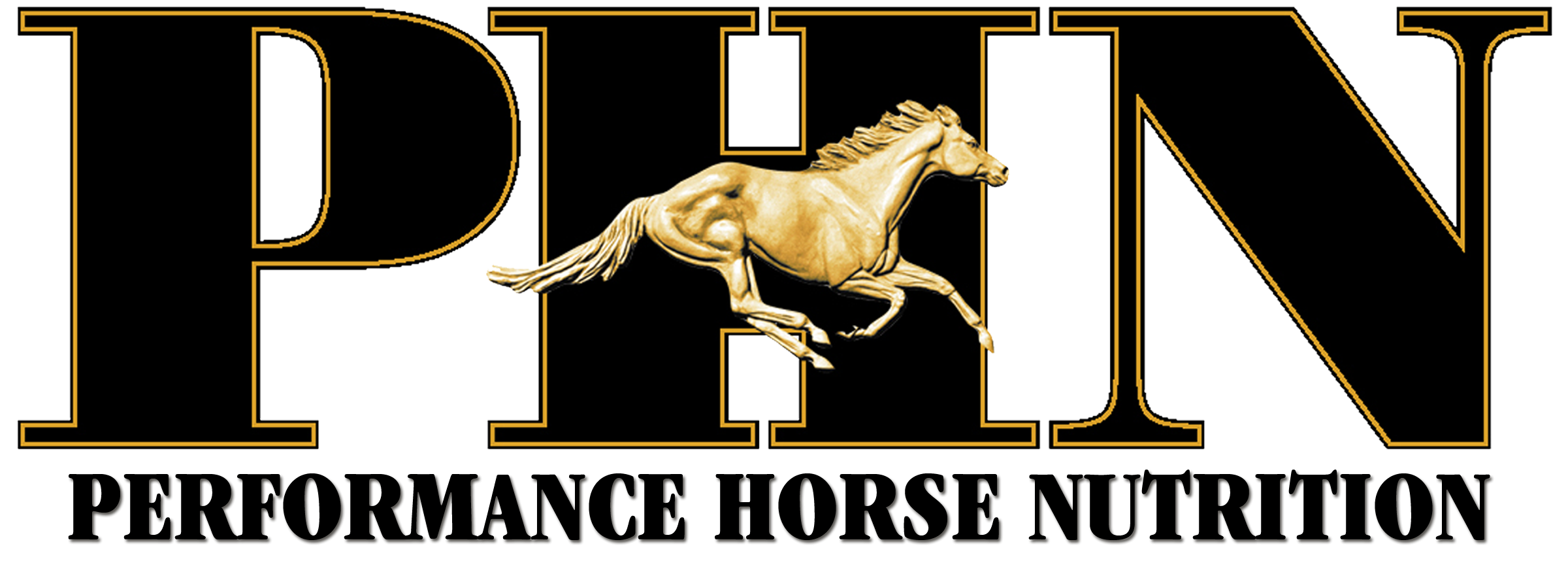FEEDING THE BREEDING FARM
BROODMARE
march 2018

Written by Performance Horse Nutrition
The goal of any breeding program is to produce strong sound foals. To do this there are several factors involved including genetics, environment and nutrition. Nutrition is a critical piece of any successful breeding operation and must be considered at every level: Stallions, mares, foals. In part two of this 3 part series on feeding the breeding farm we will focus on feeding the broodmare.
Mare owners spend thousands of dollars on stud fees and shell out hundreds of dollars in veterinary care to prepare their mares for breeding and foaling. Mares are expected to grow a healthy foal inside them for 11 months and produce enough milk for that foal for up to 6 months. Furthermore, many mares are expected to raise healthy foals year after year, requiring successful rebreeding while the previous year’s foal is still by her side. Because nutrition influences each stage of the broodmare’s production cycle, nutritional management may, in many ways, determine the success of the breeding program.
Broodmare nutrition can be broken down into several different stages: conception, early, mid and late gestation, and lactation. Nutritional management is a simple, yet cost effective tool that we can apply to ensure normal reproductive cycles, improved conception rates and increased pregnancy maintenance in mares to ensure overall reproductive success. Body condition scoring serves as an effective means to determine the nutritional needs of your mare. Using a numeric scoring system from 1 to 9, we can estimate the animal’s body energy reserves. This information can be used to adjust feeding regimes to reach optimal body condition. The optimal body condition score for a mare coming into the breeding season is between 5 and 7. If a mare exhibits a body condition score at either end of the scale reproductive efficiency is decreased.
Conception
The effect of nutrition and body condition on reproduction in mares has been clearly illustrated. Mares coming into the breeding season with an optimal body condition score (5-7) start cycling earlier than mares with a low body condition (less than 5). Thinner mares also have difficulty conceiving and maintaining pregnancy as compared to mares in optimal body condition. Some obese mares continue to cycle throughout the winter when typically reproductive cycling is shut down. The impact of energy intake and body condition on the reproductive performance of the mare has also been described where a high-energy diet shortened the interval to first ovulation in thin mares transitioning from winter as compared to those on a low energy diet. This increase in dietary energy however does not benefit mares that are already in an optimal or fat body condition.
While some obese mares may continue to cycle throughout the winter there are negative repercussions for keeping mares in this condition. In humans and rodents obesity contributes to infertility, poor pregnancy and impaired fetal well-being. Obesity has been associated in horses and ponies with decreased insulin sensitivity, and both obesity and decreased insulin sensitivity have been associated with decreased reproductive function in mares. Obese mares can have a longer interval between ovulations which can be due to a persistent corpus luteum. This makes the obese mare more difficult to rebreed if an initial breeding is not successful increasing the cost incurred to the owner.
Mares in optimal body condition going into the breeding season typically do well on good quality forage and a concentrated vitamin and mineral pellet. If mares are overweight prior to the breeding season and combination of a balancer pellet and exercise is an ideal program to get them into optimal shape before breeding. If the mare is underweight a high fat content which will help increase the mares’ body condition in preparation for breeding.
Early & Mid Gestation:
From the time of conception through foaling, the fetus is actively growing. However, fetal growth is not occurring at a steady rate. Fetal growth is quite slow during the first seven months of pregnancy and then very rapid the final trimester. During early and mid pregnancy the developing fetus is very small, less than 20% of birth weight. This represents less than 2% of the mare’s body weight. The nutrient requirements of the mare during early pregnancy are very similar to the nutrient requirements of a non-pregnant mare. A common feeding mistake is to over feed mare’s calories during early pregnancy causing them to become overweight. An all forage (hay or pasture) diet will provide most mares with adequate levels of both energy (calories) and protein, but is likely deficient in several key minerals. Feeding a balancer pellet during early and mid pregnancy along with good quality forage will ensure the adequate levels of micro and macro minerals along with critical vitamins and being met in the diet.
Late Gestation:
During late pregnancy the fetus will gain approximately 80% of its birth weight. To support this rapid fetal growth, the mare’s requirements for energy, protein, minerals and vitamins increase. The requirements for trace minerals are especially critical since the mare will fortify the unborn foal liver with minerals such as copper, zinc and selenium. Mare’s milk is not a good source of these trace minerals therefore they must be stored in the foal’s liver prior to birth. The foal utilizes these minerals during the first two months of life to support proper skeletal growth. Without proper liver stores of trace minerals, the foal may be predisposed to growth disorders. Compounded with an increased requirement for nutrients, the mare in late pregnancy has a limited capacity for feed intake due to the size of the fetus compressing the digestive system. To meet the nutrient needs of mares in late pregnancy, hay intake is often reduced and fortified grain is fed as a concentrated source of essential nutrients. Providing essential protein, energy and balanced levels of macro and micro nutrients to ensure health, fertility and optimum growth are critical when choosing feeds for broodmares.
Lactation:
The lactating mare has the highest nutrient requirements of any horse on the farm. To produce milk and to repair the reproductive tract in preparation for future pregnancy, the mare requires substantial amounts of energy, protein, calcium and phosphorus. To maintain both adequate milk production and body condition, lactating mares will often need to be fed substantial amounts of grain and high quality forage. Without adequate energy (calorie) intake, mares will lose body weight and be difficult to get pregnant. The most common feeding mistake made with lactating mares is to underfeed them. Careful management is necessary in this class of mares because individual requirements will vary greatly. A foal can quickly lower condition in the mare, and lactating mares in a thin body condition may take longer to rebreed and have lower pregnancy rates than mares in a moderate to fleshy condition.
Each mare is an individual so make sure you monitor changes in body condition weekly and make feeding changes accordingly. Supply the mare with plenty of good quality forage along with the correct fortified grain product and you can be rest assured her nutritional program has been well taken care of.
-Dr. Tania Cubitt

